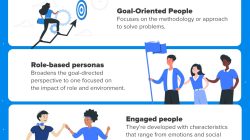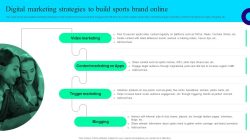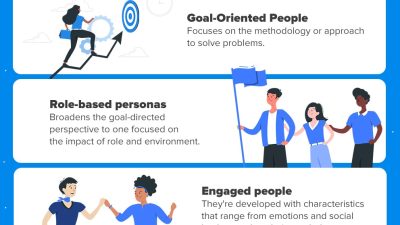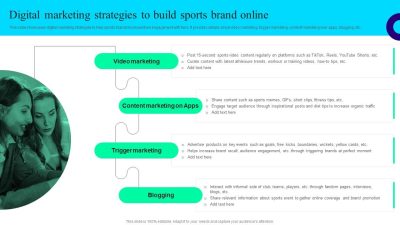Effective Marketing Strategies for Scaling Subscription Based Digital Products offers a transformative approach to capturing and retaining customers in the digital space. With the ever-growing demand for subscription services, businesses must refine their strategies to not only attract subscribers but also ensure their long-term satisfaction and loyalty. This guide delves into the essential elements that shape successful subscription models, from understanding target audiences to leveraging advanced tools for retention.
By exploring the unique characteristics and advantages of subscription-based digital products, businesses can uncover the vast potential within this model. Learn how to identify your ideal customers, craft compelling value propositions, and implement effective pricing strategies that resonate with your audience. Whether you’re a startup or an established brand, these insights will empower you to scale your subscription offerings successfully.
Understanding Subscription-Based Digital Products
Subscription-based digital products have transformed the landscape of consumer engagement and business growth. These products allow consumers to access services or content for a recurring fee, creating a steady revenue stream for businesses while providing users with convenience and value.The defining characteristics of subscription-based digital products include their recurring payment structure, accessibility, and ongoing relationship with customers. Unlike traditional one-time purchases, subscriptions offer continuous service delivery, frequent updates, and often personalized experiences.
This model fosters loyalty, as customers are more likely to stay connected with the product over time when they receive regular value.
Advantages of Subscription Models
The subscription model presents significant benefits for both businesses and consumers. For businesses, predictable revenue streams enhance cash flow management and long-term planning. For consumers, subscriptions provide flexibility and cost-effectiveness. Below are the key advantages for each group:
- For Businesses:
- Predictable revenue: Subscription fees generate consistent income, aiding in budgeting and forecasting.
- Customer retention: Ongoing relationships foster loyalty and reduce churn rates.
- Scalability: Easy to scale with increasing demand for digital products without significant additional costs.
- For Consumers:
- Affordability: Lower upfront costs often make products more accessible.
- Convenience: Users enjoy continuous access to products without the hassle of repeated purchases.
- Variety: Consumers can choose from a wide range of products tailored to their preferences and needs.
Common Types of Subscription-Based Digital Products
The market is rich with diverse subscription-based digital products, catering to various consumer needs. Understanding the types available can help businesses tailor their offerings effectively. The following categories are prevalent:
- Streaming Services: Platforms like Netflix and Spotify provide endless entertainment through monthly subscriptions, delivering exclusive content and personalized recommendations.
- Software as a Service (SaaS): Products like Adobe Creative Cloud or Microsoft 365 allow businesses to access powerful tools via subscriptions, ensuring they always have the latest features and updates.
- Online Learning Platforms: Services like Coursera or Udemy offer subscription models, enabling users to access numerous courses and training materials at their own pace.
- Memberships and Content Platforms: Websites like Patreon and Medium allow creators to monetize their content, providing subscribers with premium articles, early access, and behind-the-scenes content.
Target Audience Analysis
Understanding your target audience is a cornerstone in building effective marketing strategies for subscription-based digital products. Identifying who your ideal customers are enables you to tailor your offerings, enhance engagement, and ultimately increase retention rates. This strategic focus not only informs your product development but also shapes your marketing messaging, ensuring that you resonate with the right individuals.To accurately identify and analyze your target audience for subscription services, it’s essential to employ a variety of methods that consider both demographics and psychographics.
By segmenting the audience based on behavior and preferences, you can create more personalized experiences that enhance customer satisfaction and loyalty.
Identification of Target Audience
Determining your target audience begins with gathering data to paint a clear picture of potential customers. The process typically encompasses several key steps:
1. Demographic Analysis
Explore age, gender, income level, education, and geographic location. Each of these factors can play a significant role in subscription service preferences.
2. Psychographic Insights
Delve into customers’ interests, values, lifestyles, and motivations. Understanding these aspects helps tailor your offerings and marketing strategies to align with what your audience truly cares about.
3. Behavioral Data
Analyze user behavior through website analytics, subscription patterns, and usage metrics. This information reveals how potential customers interact with your product and what drives their engagement.
Audience Segmentation Techniques
Effective segmentation allows you to categorize your audience into distinct groups based on shared characteristics or behaviors. This tailored approach enhances your marketing efforts and fosters deeper connections. Key segmentation techniques include:
Behavioral Segmentation
Classifying users based on their interactions with your digital product, such as frequency of use, purchase history, and subscription length. This data informs personalized marketing strategies that target specific user behaviors.
Needs-Based Segmentation
Identifying the unique needs and pain points of different audience groups. By developing content and features that address these specific needs, you can enhance customer satisfaction and retention.
Value-Based Segmentation
Focusing on the potential revenue each segment represents. This analysis helps prioritize marketing resources towards high-value segments, maximizing ROI.
Tools and Techniques for Audience Insights
Utilizing the right tools and techniques can significantly enhance your understanding of your target audience. Some effective resources for gathering insights include:
Surveys and Feedback Forms
Using questionnaires to gather direct feedback from users about their preferences, expectations, and experiences can provide deep insights into customer needs.
Analytics Software
Platforms like Google Analytics offer invaluable data regarding user behavior, demographics, and traffic sources, allowing for a more nuanced understanding of audience interactions.
Social Media Listening Tools
Tools such as Hootsuite or Brandwatch enable you to monitor conversations and sentiments around your product, providing real-time insights into audience perceptions and emerging trends.
Customer Relationship Management (CRM) Systems
CRMs enable you to track customer interactions and preferences, helping you to segment audiences effectively and tailor communication strategies.By implementing these strategies, tools, and techniques, you can build a comprehensive understanding of your target audience, allowing for more effective marketing strategies that drive the growth of your subscription-based digital products.
Value Proposition Development
Creating a compelling value proposition is essential for the success of subscription-based digital products. A well-defined value proposition clearly communicates the unique benefits and advantages that your product offers to potential subscribers, setting it apart from the competition. It captures the essence of what makes your service valuable, ultimately driving customer acquisition and retention.A robust value proposition encompasses several key elements, including clarity, relevance, and differentiation.
It should resonate with the target audience’s needs and pain points, illustrating how your product solves their problems or enhances their lives. To craft an effective value proposition, consider the following important steps:
Crafting a Compelling Value Proposition
Begin by thoroughly understanding your product’s features and how they translate into benefits for your customers. The process involves identifying what makes your subscription service unique. Here are the steps to develop a strong value proposition:
1. Identify Customer Pain Points
Research and analyze the specific challenges faced by your target audience. This understanding will guide you in tailoring your value proposition to address their needs effectively.
2. Define Key Benefits
Clearly Artikel how your product alleviates these pain points or adds value. Focus on the outcomes that subscribers can expect, such as time savings, cost reduction, or enhanced convenience.
3. Develop Unique Selling Points (USPs)
Determine what differentiates your subscription service from others in the market. This could include exclusive content, superior customer support, or innovative features.
4. Use Clear and Concise Language
A compelling value proposition should be easy to understand. Avoid jargon and ensure that your message is straightforward and impactful.
5. Test and Refine
After drafting your value proposition, gather feedback from potential customers. This iterative process allows you to refine your message until it resonates perfectly with your audience.Successful subscription services have mastered the art of value proposition development. For instance, Netflix differentiates itself with a value proposition centered around vast content variety and personalized recommendations, ensuring that users always find something engaging to watch.
Similarly, Spotify offers ad-free listening and curated playlists, enhancing the music experience for its subscribers.
“An effective value proposition is not just about what you offer; it’s about how it improves your customer’s life.”
Aligning your value proposition with customer needs ensures that it remains relevant and appealing. By continuously gathering customer feedback and monitoring industry trends, you can adapt your value proposition to meet evolving demands. This alignment not only helps in attracting new subscribers but also fosters loyalty among existing ones.Remember that a powerful value proposition is the cornerstone of effective marketing strategies for subscription-based digital products.
The clearer and more compelling your message, the stronger your connection with potential customers will be.
Pricing Strategies
In the competitive landscape of subscription-based digital products, pricing strategies are pivotal in attracting and retaining subscribers. An effective pricing model not only influences customer acquisition but also impacts long-term profitability and customer loyalty. By understanding various pricing approaches and employing psychological tactics, businesses can enhance their perceived value and optimize revenue streams.Pricing models for subscription products can vary significantly.
The selection of a suitable model can depend on the target audience, product features, and market conditions. Not only do these models determine how customers perceive value, but they also influence purchasing behavior. Here are some prevalent pricing models:
- Flat-Rate Pricing: A single monthly fee allows unlimited access to the product. This model simplifies the decision-making process for users and can lead to higher customer retention.
- Tiered Pricing: Different pricing levels offer various features, appealing to a wider range of customer needs and budgets. This strategy encourages upselling and can cater to both budget-conscious consumers and those willing to pay more for premium features.
- Usage-Based Pricing: Customers pay based on their usage, making it attractive for those who may not need full access all the time. This model can help in scaling as users only pay for what they consume.
- Freemium Model: Offering a basic version for free while charging for premium features can drive user engagement and lead to conversions over time.
Testing price points is essential in determining optimal pricing. The following methods can provide valuable insights into how customers respond to different pricing strategies:
- A/B Testing: This involves offering two different prices to segments of the audience and analyzing which option yields better conversion rates. This method provides real-time feedback on pricing effectiveness.
- Value-Based Pricing Surveys: Conducting surveys to understand customer willingness to pay can help in setting prices that align with perceived value.
- Competitor Analysis: Analyzing competitors’ pricing strategies can offer insights into market expectations and help position your product competitively.
Psychological pricing tactics can significantly enhance the perceived value of subscription products. These strategies leverage consumer psychology to influence purchase decisions. Here are some effective tactics:
- Charm Pricing: Setting prices just below whole numbers (e.g., $9.99 versus $10) can create an impression of better value and increase sales.
- Anchoring: Presenting a higher-priced option alongside the main offering can make the latter appear more affordable and increase the likelihood of purchase.
- Decoy Pricing: Introducing a less attractive option can steer customers towards a more favorable choice, enhancing perceived value.
Implementing effective pricing strategies can lead to significant increases in customer acquisition and retention, ultimately driving revenue growth.
Customer Acquisition Strategies: Effective Marketing Strategies For Scaling Subscription Based Digital Products
In the competitive landscape of subscription-based digital products, a well-defined customer acquisition strategy is essential for sustainable growth. This strategy not only aims to attract new users but also to convert them into loyal subscribers. A comprehensive customer acquisition strategy involves multiple facets that work synergistically to optimize outreach and engagement. Understanding where your potential subscribers congregate, what messaging resonates with them, and how to leverage various channels is key to driving subscriptions.
Comprehensive Customer Acquisition Strategy
A robust customer acquisition strategy should encompass a multi-channel approach. This ensures a wider reach and higher chances of conversion. Key components to consider include:
Targeted Digital Advertising
Utilizing platforms like Google Ads and Facebook Ads allows for precise targeting based on demographics, interests, and behavior. For example, a fitness app could run campaigns targeting users interested in health and wellness, highlighting specific features that align with their interests.
Content Marketing
Creating valuable, relevant content that addresses the pain points of your target audience can drive organic traffic and build trust. Blog posts, how-to guides, and video tutorials that showcase the benefits of your digital product can effectively draw in prospects.
Social Media Engagement
Engaging with audiences on platforms like Instagram, Twitter, and LinkedIn can foster community and relationship-building. Regular updates, polls, and interactive content keep users engaged and informed about subscription offerings.
Email Marketing
Building an email list and nurturing leads through personalized email campaigns can significantly enhance conversion rates. Providing exclusive content or early access to features can entice potential subscribers to join.
Effective Marketing Channels
Identifying the right marketing channels is crucial for reaching potential subscribers efficiently. Consider the following channels that have proven successful for subscription-based products:
Search Engine Optimization ()
Improving organic search visibility can increase traffic. Utilize relevant s in your website content, optimize meta tags, and build backlinks to enhance your search ranking.
Influencer Marketing
Partnering with influencers who resonate with your target audience can dramatically expand your reach. For instance, a subscription-based cooking service collaborating with popular food bloggers can introduce the product to their followers.
Affiliate Programs
Creating an affiliate program motivates others to promote your subscription service. Affiliates earn a commission for every subscriber they bring, fostering a network of advocates who can amplify your reach.
Role of Partnerships and Collaborations
Strategic partnerships can significantly enhance customer acquisition by leveraging the established audiences of partner brands. Collaborations can take many forms, such as co-hosting webinars, cross-promotional marketing efforts, or bundled offerings.For example, a subscription-based educational platform could team up with schools or online course providers to offer exclusive deals. Such partnerships not only attract new subscribers but also build credibility and trust by associating with respected entities in the industry.As digital landscapes evolve, adapting customer acquisition strategies to incorporate new channels and partnerships will ensure sustained growth in the competitive subscription market.
The right mix of strategies will empower your product to reach its full potential, fostering a loyal subscriber base and promoting long-term success.
Retention and Engagement Techniques

In the competitive landscape of subscription-based digital products, retaining customers is as crucial as acquiring them. Effective retention strategies not only enhance customer loyalty but also reduce churn rates, ultimately driving revenue growth. Engaging content plays a pivotal role in keeping subscribers active and satisfied, leading to long-term success for your brand.To enhance customer retention rates, it’s essential to implement targeted strategies that resonate with your audience.
Here are several key tactics to consider:
Customer Feedback and Continuous Improvement
Regularly soliciting feedback from subscribers is vital to understanding their needs and preferences. By actively listening to your customers, you can identify areas for improvement and enhance their overall experience. Key methods for gathering feedback include:
- Surveys and Polls: Deploy short, focused surveys via email or within your product to gauge satisfaction levels or discover new features your users desire.
- Net Promoter Score (NPS): Measure the likelihood of customers recommending your service to others by asking them to rate their experience.
- User Interviews: Conduct interviews with a select group of subscribers to gather in-depth insights into their experiences and expectations.
Creating Engaging Content
Engaging content is essential for keeping subscribers interested and active. Content should not only provide value but also encourage interaction and community building. Consider these approaches for developing engaging content:
- Personalized Recommendations: Leverage data analytics to deliver tailored content suggestions based on user behavior and preferences.
- Interactive Formats: Utilize quizzes, polls, and live webinars to create an interactive experience that encourages participation and community engagement.
- Regular Updates: Keep content fresh and relevant by consistently updating your offerings, including blog posts, videos, and educational materials.
Metrics for Tracking Subscriber Engagement
Understanding subscriber engagement and satisfaction levels is essential for measuring the effectiveness of your retention strategies. Key metrics to track include:
- Churn Rate: This metric indicates the percentage of subscribers who cancel their subscriptions within a given period. A lower churn rate signifies better retention.
- Engagement Rate: Measure the percentage of active users who interact with your content, reflecting the effectiveness of your engagement strategies.
- Customer Lifetime Value (CLV): Estimate the total revenue a customer is expected to generate during their entire relationship with your business. Higher CLV signals successful retention efforts.
“Retention is the new acquisition. Engaged customers are not just a source of recurring revenue; they are your best advocates.”
Leveraging Technology and Automation
In today’s fast-paced digital landscape, leveraging technology and automation is crucial for scaling subscription-based digital products. With the right tools, businesses can streamline operations, enhance customer experiences, and drive growth while minimizing manual effort. Embracing these technological advancements not only optimizes processes but also fosters innovation and efficiency.Automation in marketing and customer support plays a pivotal role in engaging and retaining subscribers.
By integrating advanced tools, businesses can create personalized experiences that resonate with their audience, ultimately leading to increased satisfaction and loyalty. Below, we explore essential tools and best practices for incorporating technology into subscription strategies.
Tools for Streamlining Subscription Management
Choosing the right tools for subscription management can significantly reduce the complexity of handling customer accounts, billing, and reporting. Here are some key tools that can help:
- Chargebee: An advanced subscription management platform that automates billing and revenue operations, providing insights and analytics for better decision-making.
- Stripe: A powerful payment processing solution that supports subscriptions, offering customizable options for pricing and invoicing.
- Recurly: This tool specializes in managing recurring billing and subscriptions, optimizing revenue recovery with automated dunning management.
- Zuora: A comprehensive subscription management platform that helps businesses manage the entire lifecycle of their subscription services with real-time analytics.
These tools facilitate not only effective billing but also enhance customer experience by providing seamless account management.
Role of Automation in Marketing and Customer Support
Incorporating automation into marketing strategies and customer support is key to maintaining consistent engagement and satisfaction. Automating routine tasks allows teams to focus on high-value interactions. Here’s how automation can be optimized:
- Email Marketing Automation: Using platforms like Mailchimp or HubSpot to send personalized emails based on user behavior enhances engagement and drives conversions.
- Chatbots: Implementing AI-powered chatbots can provide instant customer support, addressing common inquiries while freeing up human agents for complex issues.
- CRM Systems: Tools such as Salesforce automate customer relationship management, helping track interactions and streamline communication with subscribers.
- Social Media Automation: Utilizing tools like Buffer or Hootsuite for scheduling posts ensures consistent brand messaging without constant manual effort.
Automation tools not only reduce operational costs but also improve response times and customer satisfaction.
Best Practices for Integrating Technology into Subscription Strategies
Adopting technology into your subscription strategy should follow best practices to maximize its effectiveness and impact. Here are essential practices to consider:
- Data Security: Ensure that all tools comply with data protection regulations to safeguard customer information and build trust.
- Regular Training: Equip your team with the knowledge to effectively use these tools, ensuring they can leverage all features for peak efficiency.
- Customer Feedback: Regularly solicit input from subscribers regarding their experiences with technology; this feedback can guide enhancements and innovations.
- Scalability: Choose platforms that can grow with your business, providing flexibility as your subscriber base expands.
By integrating technology thoughtfully and strategically, businesses can enhance their subscription offerings and achieve sustainable growth in the competitive digital marketplace.
Analyzing Performance Metrics
Understanding performance metrics is crucial for subscription-based digital products as they provide insights into customer behavior and the overall health of the business. By analyzing these metrics, businesses can make informed decisions that drive growth and improve customer satisfaction. Utilizing data analytics allows for precise tracking of key performance indicators, enabling marketers to refine their strategies effectively.
Essential Performance Metrics for Subscription Services
Identifying and monitoring key performance metrics is vital for assessing the success of your subscription service. These metrics offer valuable insights into customer engagement, financial health, and operational efficiency. Some of the essential metrics include:
- Monthly Recurring Revenue (MRR): A critical metric that represents the predictable revenue generated from subscriptions each month.
- Customer Acquisition Cost (CAC): The total cost of acquiring a new customer, including marketing and sales expenses, which helps assess the efficiency of your acquisition strategies.
- Churn Rate: The percentage of subscribers who cancel their subscriptions within a given period, indicating customer retention levels.
- Customer Lifetime Value (CLV): The total revenue expected from a customer throughout their relationship with your business, crucial for understanding the long-term value of your customer base.
Using Data Analytics to Drive Marketing Decisions, Effective Marketing Strategies for Scaling Subscription Based Digital Products
Data analytics plays a pivotal role in shaping marketing strategies for subscription services. By leveraging advanced analytics tools, businesses can uncover patterns and insights that drive growth. This process involves collecting and analyzing data from various sources, including user behavior, acquisition channels, and engagement metrics.
“Data-driven decisions significantly enhance marketing effectiveness and customer satisfaction.”
Investing in analytics can lead to informed decisions regarding product offerings, promotional campaigns, and customer engagement strategies. For instance, analyzing user engagement data can reveal the most popular features of a service, guiding improvements and focus areas.
Adjusting Strategies Based on Performance Insights
Regularly reviewing and adjusting marketing strategies based on performance insights is essential for maintaining growth in subscription services. Effective adjustments can be made by:
- Conducting A/B Testing: Implementing A/B tests for different marketing messages or pricing strategies allows businesses to identify the most effective approaches.
- Tuning Pricing Models: Analyzing customer feedback and market trends can lead to optimized pricing strategies that enhance customer acquisition and retention.
- Refining Customer Segmentation: Continuously assessing customer data enables businesses to tailor marketing strategies to specific segments, ensuring that messaging resonates and drives engagement.
- Enhancing Customer Experience: Using insights from customer feedback and behavior analytics to improve user experience can significantly reduce churn rates and boost satisfaction.
By diligently analyzing performance metrics and adjusting marketing strategies accordingly, subscription-based digital products can navigate market dynamics effectively and achieve sustained growth.









